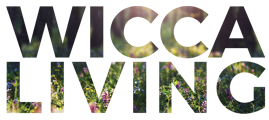Symbols have always been a part of magical systems throughout the world. They can be thought of as a tool for communicating visually, rather than verbally, with the energy of the Universe. Runes are unique magical symbols in that they have had both visual and verbal functions. Known primarily as an alphabet used by the Germanic peoples of ancient Europe, these symbols were actually in use for magical purposes long before they were fashioned into a writing system.
From artifacts such as spears, shields, rock carvings and giant stones, we know that the runes were used for many purposes, including magic. Runic inscriptions on weaponry and jewelry turned these treasured objects into talismans. Some carvings consisted of what we might recognize as spellwork today, such as magical formulas, prayers, invocations, and symbol magic.
As for divination, one of the main uses of the runes today, there is evidence suggesting that at least some ancient Germans also used runes for this purpose. People seeking answers from the invisible realms would carve symbols into strips of wood cut from the branch of a fruit-bearing tree. The carved strips were then scattered onto a white cloth. The reader of the signs would pick up three of the strips at random, with the gods’ guidance, and then interpret their meanings in the context of the question.
In Nordic myth, the runes are said to contain the secrets of the Universe, which can be glimpsed and even utilized by those who understand their meanings. In this way, runes are somewhat akin to later magical systems such as the Kabalah, the Hermetic Principles, and the Tarot: we can learn and manifest much from understanding them, but they still remain mysterious.
Meaning and Magic
Each runic character has a name with a meaning, such as Gebo (“gift”), Sowilo, (“sun”) and Laguz (“water”). By contrast, the names of the letters in most other Western alphabets have no meaning other than the sounds they’re meant to convey. (Two other exceptions are Hebrew and the ancient Irish alphabet known as Ogham, both of which were also utilized for esoteric purposes.)
But these names are not necessarily literal when applied in divination and other runic magic. Most of the time, the meanings associated with the runes are rooted in metaphors and esoteric associations. For example, drawing Ehwaz (“horse”) in a reading is not likely in most cases to refer to an actual horse. Instead, Ehwaz symbolizes the qualities of faithfulness and trust, which a relationship between a horse and its rider requires. It can also refer to movement or travel. Dagaz (“dawn”) is not so much about the time of day, but instead represents breakthrough, transformation, and hope. In this way, each rune name serves as a bridge between the human mind and the ethereal realm of divine wisdom that the runes inhabit. In contemplating both the symbol itself and the implications of its name, we come to an understanding of the energies of the rune.
Outside of divination, the most widely practiced form of rune magic today is the use of runes in magical inscriptions. Traditionally, runic symbols are carved into objects to create talismans for luck and protection. These can be personal objects, such as jewelry, drinking cups, wallets, or even houses—anything of value that you want to empower or protect with magical energy. Runic talismans can also be created to achieve a specific magical goal, such as landing a job or attracting a new love relationship. In this case, the runes are carved into a ‘tine,” which is usually a strip of wood or bark, but it can also be stone, metal, or even paper if need be. Carving is the traditional method, but runes can also be drawn and/or painted onto a surface to make a talisman, provided that sufficient care and concentration goes into creating the runic shapes.
It takes patience and practice to become adept at working with runes, but it’s a valuable pursuit for those who are drawn to these mysterious characters. Whether your interest is in creating magical inscriptions, divining your future, or both, you will find that learning the runes is a lifelong journey of self-discovery.


